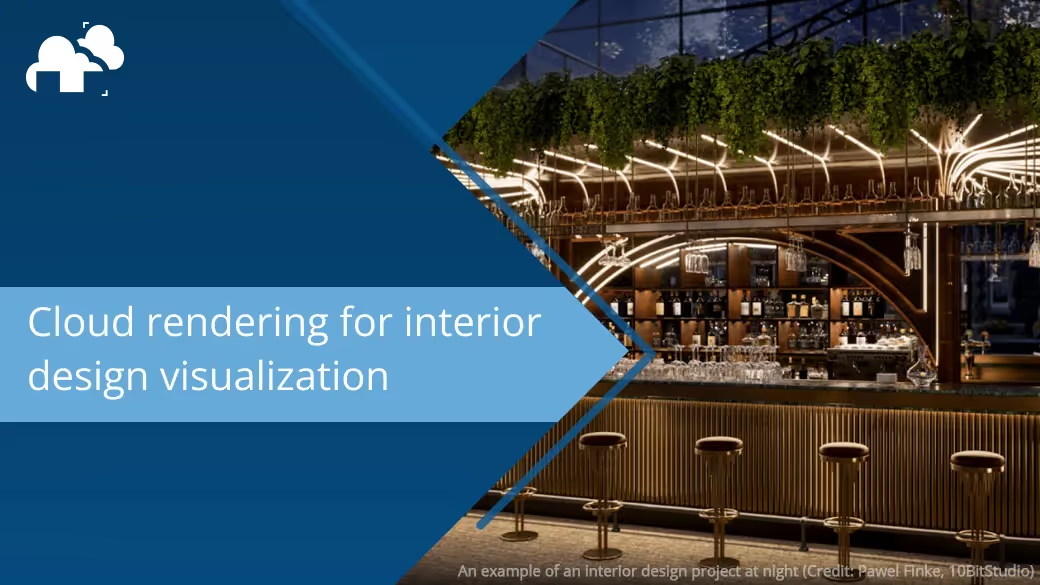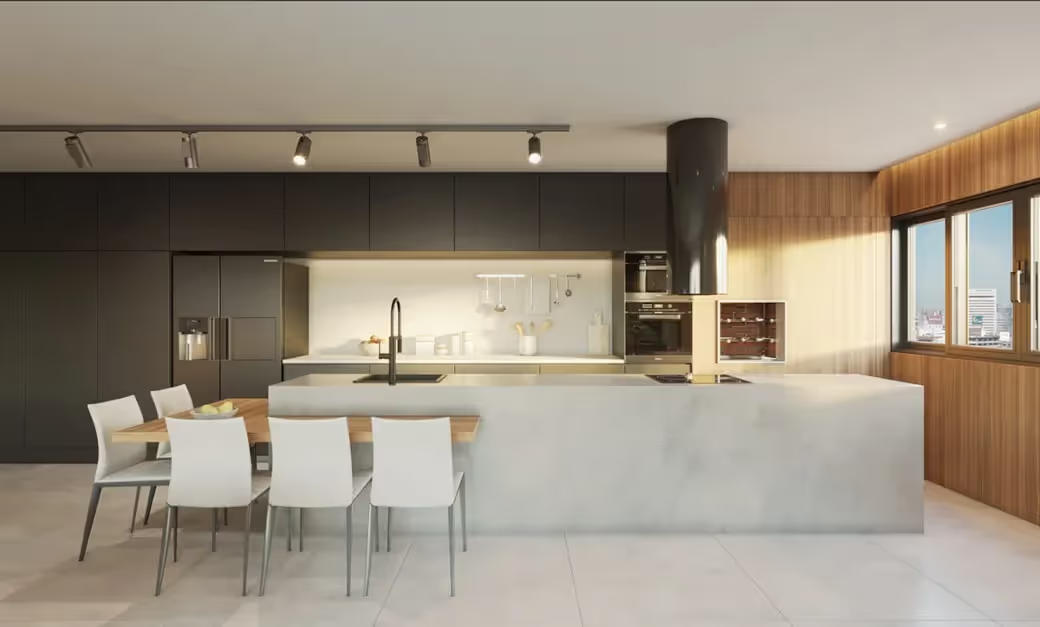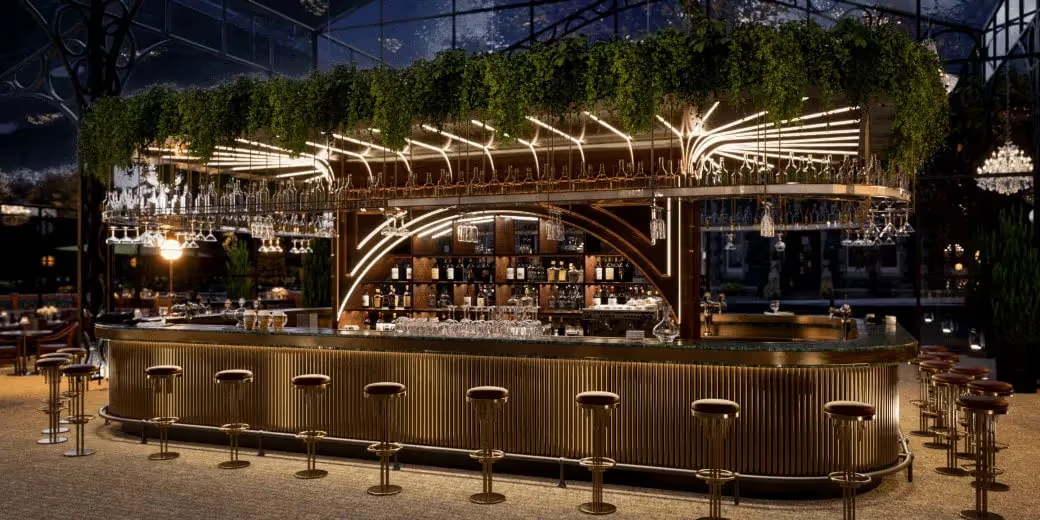
Interior design is one of the most popular and fascinating branches of the design industry, and also one of the most elaborate ones. It requires good communication and coordination among all the parties involved to make things happen. Typically, interior design studios have entire teams working on a project because there are so many aspects and details to take into account that it would simply be too much for a single person to handle.
Additionally, there is communication with the clients who may have different ideas or may not be entirely sure of what they want to achieve. Often, clients have a sense of what they would like to create for their home, rather than clear and defined ideas. This puts the interior design team in the condition to work on different concepts simultaneously to show the client various courses of action from the outset of a new project. In this situation relying on cloud rendering can be incredibly helpful to visualize the environment, the mood and the atmosphere of the new space.
The key to success in a fast-paced world like the one we are living in is the ability to deliver high quality in the shortest time possible. Clients are often impatient to see results, and sometimes they don’t have a sophisticated level of imagination to visualize the space with the information collected in a preliminary mood board.
Creating digital spaces and rendering atmospheres, including lighting and different moments of the day alongside color palettes, is one of the most powerful tools that interior designers possess to impress clients and help them better define their ideas. An interior design project is much more than putting together furniture; it is designing spaces with people in mind, creating spaces for life, work, or entertainment, and all these functions need to be supported not only by objects but also by colors, finishing, and, last but not least, light.
How the light is going to interact with all the other elements is vital and is going to play a key role in the final atmosphere of the space. And this is actually what makes interior design renderings pretty complicated projects that usually require quite some time to render. To have an accurate and realistic recreation of the space, the settings to render lights and materials need to be very specific, which usually means working with more minute parameters.
This is where cloud rendering comes to our aid. Cloud rendering means that it is not our machine that is going to do all the computing work to render the interior, but several virtual machines on a remote server, and you only pay for what you use. This also means that while rendering in the cloud, the productivity of a studio can still be high, and designers can focus on other projects or meet with clients instead of having to wait for their machines to complete the renderings. And based on your needs, you can scale the process up or down, managing how fast you need your renderings to be computed, making the process entirely flexible and tailored to each individual need.
Popular render farm services such as GarageFarm.NET offer a wide pool of cloud-supported software where you upload your scene from your local device and have the remote server take care of the rendering. You pick the priority and the hardware configuration you need and pay correspondingly. Once the render farm service has finished your frames, you can download your images and show them to your clients.

The key to a successful project is always good communication especially when there are many people involved in taking care of different aspects and when the team has to deal with clients. Sometimes clients don’t have a clear vision of what they want, sometimes they don’t have a vision at all and sometimes they need to actually see their ideas visualized as a 3D rendering to realize that they might not work or that they didn’t like the concept as much as they thought.
All these issues are part of the game, and if, on one side a good team can develop its own internal strategies to perform at its best, when it comes to dealing with clients every project and approach is different. Some clients might need to see multiple versions of the same concept before being convinced of what they want, while others might want to see different options and still have a hard time picking the right one.
These situations can be time-consuming, especially when dealing with tight deadlines. Having the possibility to rely on a service that allows the creatives to be free to work on a few extra options while the remote server is completing the renderings can be vital.

One of the most important things when it comes to interior design projects is to make the clients aware of the efforts that each step of the design process requires in order to set realistic expectations in terms of time and costs. My friend Sarah is an amazing interior designer in New York and she has mentioned many times how communication with clients is vital. It can be easy to think that an idea could work but then when the layout and the renderings are presented, clients might realize they want to go in a different direction. This means the design team has to develop another solution.
Sometimes seeing the same space during different moments of the day can help to decide if a solution is going to work or not and then adjust. Cloud rendering can really cut the computing time down to seconds or minutes compared to hours or days, making project development much smoother and efficient.
Mindful of the preparation lead time necessary to recreate a space in 3D with all the elements, lights, colors and finishing, is then a matter of setting the cameras and picking the priority before receiving back the final files as still images or animations/frames if necessary. Potential virtual tours of the interiors can also be set to impress the client and convince them of a particular layout and cloud rendering is the solution.

With many manufacturers creating 3D versions of their products and having them available for design studios, the creation of digital spaces and previews is becoming more and more commonplace and not only for bigger studios. The possibility to offer clients real views of the space and in a reasonable time make changes to better answer their requests is a powerful workflow afforded by a cloud rendering service. This grants good results also during the construction phase, making both the designers’ and the clients’ lives easier.